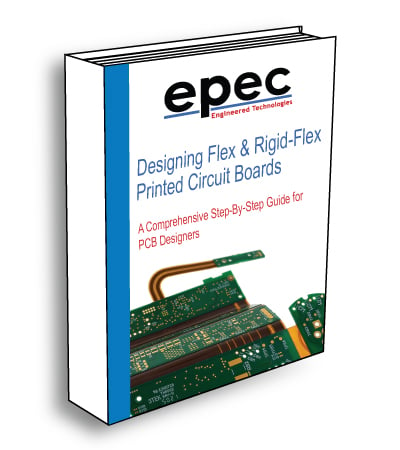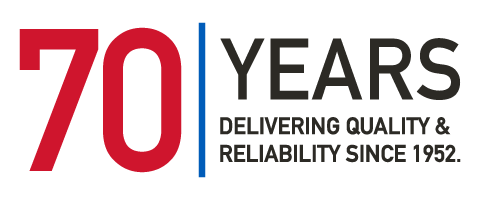Flex Circuit Termination Methods
Flexible Printed Circuit (FPC) connectors are essential components in modern electronics that require flexible and high-density interconnects between printed circuit boards (PCBs), LCDs, and other electronic components. With the increasing demand for compact and lightweight devices, FPC connectors have become an essential part of various applications, including smartphones, tablets, laptops, wearable devices, medical devices, and automotive electronics. We will introduce you to the various types of FPC connectors available in the market, including their features, applications, and specifications. There are several FPC connectors commonly used in flex and rigid-flex PCBs, depending on the application and requirements.
There are a variety of terminations for flex circuits, and we can provide all these as a standard manufacturing process. Adding connectors and other minor component assemblies is a common practice when producing a flex circuit. Traditional thru-hole and SMT connectors, ZIF (zero insertion force), high-density circular connectors, D-Subminiature connectors, pogo pin/spring loaded, straddle mount, encapsulated, pin and socket connectors, point-to-point or multi-branch connectorized jumpers, leaded and RoHs compliant, are all options to consider with flexible materials. In many of the connector options, stiffeners (FR4, polyimide, aluminum) are required to help support the connection as the connectors are heavier than the flex materials, which will cause stress on the interface between the PCB and the connector.
One of the major functions of connectors on flexible and rigid-flex PCBs is the protection of signal continuity from the I/O interface to the board, including high-speed, matched impedance signal management, EMI/RFI shielding, and others. Your choice of connector and termination method on the flex or rigid-flex PCB will determine how much loss there is during that transition.
When choosing connectors, you should work with your fabricator early in the design process on your flex and rigid-flex PCB requirements so they can ensure that the design is robust enough to handle all your application needs. Have any questions? Refer to this past blog post, Flexible Circuit Boards Connector Options, which One is Best for You?
Common Termination Methods
Listed below are some of the common termination methods used in flex circuit technologies. Note that these are just a few examples of the many FPC connectors available on the market. It is important to choose the right connector based on the specific requirements of your application.
ZIF Connectors
A ZIF is a type of connector that requires very little force for insertion. These connectors are used in applications where the FPC needs to be inserted and removed frequently. ZIF connectors have a simple design and are available in various sizes and configurations. The low insertion force characteristic of ZIF connectors reduces the risk of damaging the flex circuit during installation or removal. They allow for top and bottom contact options, vertical and right-angle orientations, surface mount, and thru-hole terminations. The ZIF contact can be simply a flexible flat cable, a complex flexible PCB, or a flex tail from a rigid-flex PCB.
Contact spacing options are allowed down to 0.2mm pitch. Using a ZIF connector eliminates the need for a mating connector. The flex circuit end "mates” into the connector usually located on the rigid board. The ZIF contacts also allow for repeated cycling with minimal wear.
Tight geometrical tolerances must be maintained on the flex or rigid-flex PCB so that the ZIF contact fits optimally in the ZIF connector. In many instances, these enhanced tolerances can only be realized through investment in laser direct imaging and laser cutting.
LIF (Low Insertion Force) FPC Connectors
LIF connectors are similar to ZIF connectors but require a small amount of force to insert and remove the FPC. They are commonly used in applications where the FPC is not removed frequently. They are designed to provide an easy and secure connection with minimal effort. These connectors feature a low insertion force, allowing for easy, reliable connection with minimal effort.
They are ideal for use in applications where space is limited. The low insertion force allows for secure connections in tight spaces, enabling the fast and easy interconnection of FPC cables. The contact design also prevents damage to the FPC and the PCB. LIF FPC connectors are available in a variety of formats, including straight, right-angle, and ZIF connectors. They are often used in consumer electronics, automotive, medical, and aerospace applications.
FFC (Flat Flexible Cable) Connectors
FFC connectors are used to connect FFC cables to a PCB. They have a low profile and are available in various pitches and orientations. They are similar to ribbon cables and are commonly used in consumer electronics such as digital cameras, camcorders, and cellular phones. FFC connectors come in a variety of sizes and shapes.
Unlike ribbon cables, FFC connectors have male and female components that snap together, making them easier to assemble and disassemble. FFC connectors also provide better signal integrity and higher reliability than traditional ribbon cables.
Board-to-Board FPC Connectors
These connectors are used to connect two PCBs with FPCs in between. They have a compact design and are available in various sizes and configurations. Board-to-board FPC connectors typically consist of two parts: a mating connector and a receptacle connector. The mating connector is usually mounted on one PCB, while the receptacle connector is mounted on the other PCB.
FPC Connectors with Shielding
These connectors are used in applications where EMI shielding is required. These connectors are similar to standard FPC connectors, except they are equipped with a metal shield that encases the connection to prevent interference. This shield is typically made of aluminum or steel and helps to protect the connection from outside sources of EMI, such as radio frequencies and other electrical interference.
Flexible circuit board connectors with shielding are commonly used in applications where it is necessary to protect the connection from outside interference and to maintain signal integrity.
Insulation Displacement Connectors (IDCs)
IDCs are commonly used in flex circuits due to their quick and reliable way to terminate wires without the need for stripping or soldering. IDCs work by displacing the insulation on the wire and making contact with the conductor underneath. They are available in various sizes and configurations and can be used with both flat and round flex circuits.
Compression Connectors
Compression connectors work by compressing the conductor between two metal parts, creating a secure and reliable connection. They are often used in high-vibration environments because they provide excellent resistance to mechanical stress. Compression connectors are available in various sizes and configurations and can be used with both flat and round flex circuits.
Crimped Contacts
Crimped contacts are widely used in flex circuits because they provide a reliable and cost-effective way to terminate wires. Crimping is the process of deforming a metal sleeve around a wire, creating a secure and gas-tight connection. Crimped contacts are available in various sizes and configurations and can be used with both flat and round flex circuits.
Solderless Terminals
Solderless terminals are often used in flex circuits because they provide a quick and easy way to terminate wires without the need for soldering. They work by using a mechanical connection to make contact with the conductor. Solderless terminals are available in various sizes and configurations and can be used with both flat and round flex circuits.
Pin and Socket Connectors
These connectors are often used in applications where the flex circuit needs to be connected to a rigid board or another flex circuit. Pin and socket connectors work by inserting a pin (male) into a socket (female), creating a secure and reliable connection. They are available in different sizes, pitches, and mounting styles to accommodate various flex circuit designs.
D-Subminiature (D-Sub)
D-Sub connectors are commonly used in applications where a reliable and robust connector is needed, and where space is not a major constraint. When using D-Sub connectors on flex circuits, it is important to ensure that the flex circuit is properly supported and strain-relieved to prevent damage to the circuit. The flex circuit should also be designed with sufficient clearance and bend radius to accommodate the D-Sub connector.
Z-Axis Connectors
Z-axis connectors are a type of vertical connector that allows connections to be made perpendicular to the surface of the flex circuit. They are typically used in applications where space is limited, and a vertical connection is required. Typically, this involves using a flexible circuit substrate material that has been designed to withstand the pressure and stress of the Z-axis connector. The flex circuit should also be designed with the correct dimensions and tolerances to ensure that the Z-axis connector can be properly aligned and attached.
Thru-Hole Connectors or Surface Mount Connectors
Thru-hole or surface mount are the traditional technologies that is used in today's printed circuit boards. Right angle, Co-Planar, Parallel, Circular, D-Sub, Micro-D, I/O (including MIL-DTL-38999, Series 80 Mighty Mouse, MIL-DTL-24308, MIL-DTL-83513), and many other options are available.
With today's technology, the biggest challenge is being able to hold tolerances on flex and rigid-flex PCBs to accommodate the smaller centerline or pitch spacing, lower profile heights, and lighter SMT and thru-hole connector options. Many of the newer technologies in connectors use an actuator to secure the cable termination, are field terminatable (require no tooling), and are available in centerline spacing of 0.25mm, 0.3mm, 0.5mm, 1.0mm, and 1.25mm, and incorporate a low-profile height and lightweight.
Grounding can be achieved by directly grounding the connector shell to flex circuitry.
Crimped Contacts & Displacement Connectors
- Contacts are crimped through the dielectric material into the copper conductor.
- Contacts are available for 0.100" (2.54mm) or 0.050" (1.27mm).
- Pin headers and sockets (standard, walled, with locking, snap-in).
- Crimp connectors, contacts, and built-in self-stripping connectors (2.54mm).
- Pins (w/ capillary action, positioner, flat pins, U pins) and cable terminations (2.54mm).
- Centerline housings can also be added to encapsulate the contact.
- High insertion force for high retention and high vibration situations.
End of Line Test Requirements
Most flex and rigid-flex PCB customers specify a certain level of validation testing as a required part of the documentation package after the connectors are added to the PCB. Tests may include DWV/IR, continuity, impedance, microsections, ionic contamination, thermal testing, resistance, and others.
Most Common Suppliers of Connectors
- Samtec
- 3M
- TE Connectivity/AMP
- Glennair
- Molex
- JST
- Amphenol
- Hirose
- JAE Electronics
- Harwin
- JCT
Not Sure What Connector is the Best Option
From ZIF to thru-hole, we have the perfect connector to ensure signal integrity and reliability for your application. contact us now to consult with our experts and make the smart choice.
Request a Quote Request Design Support Request More Information



